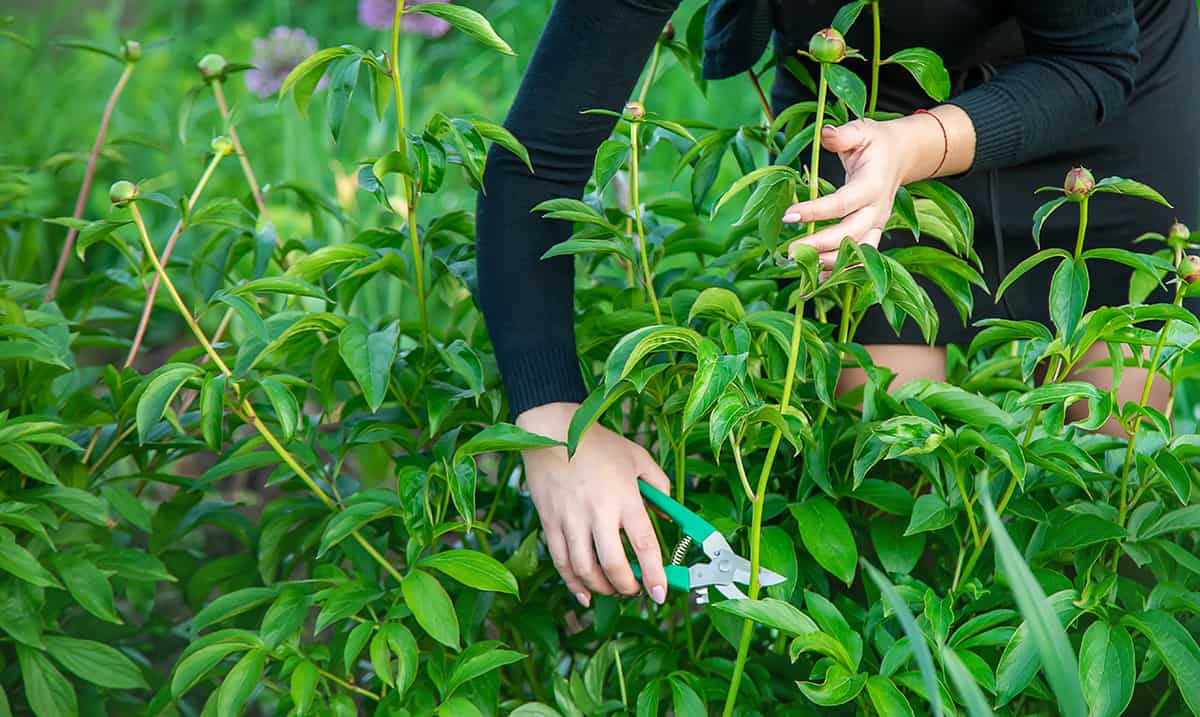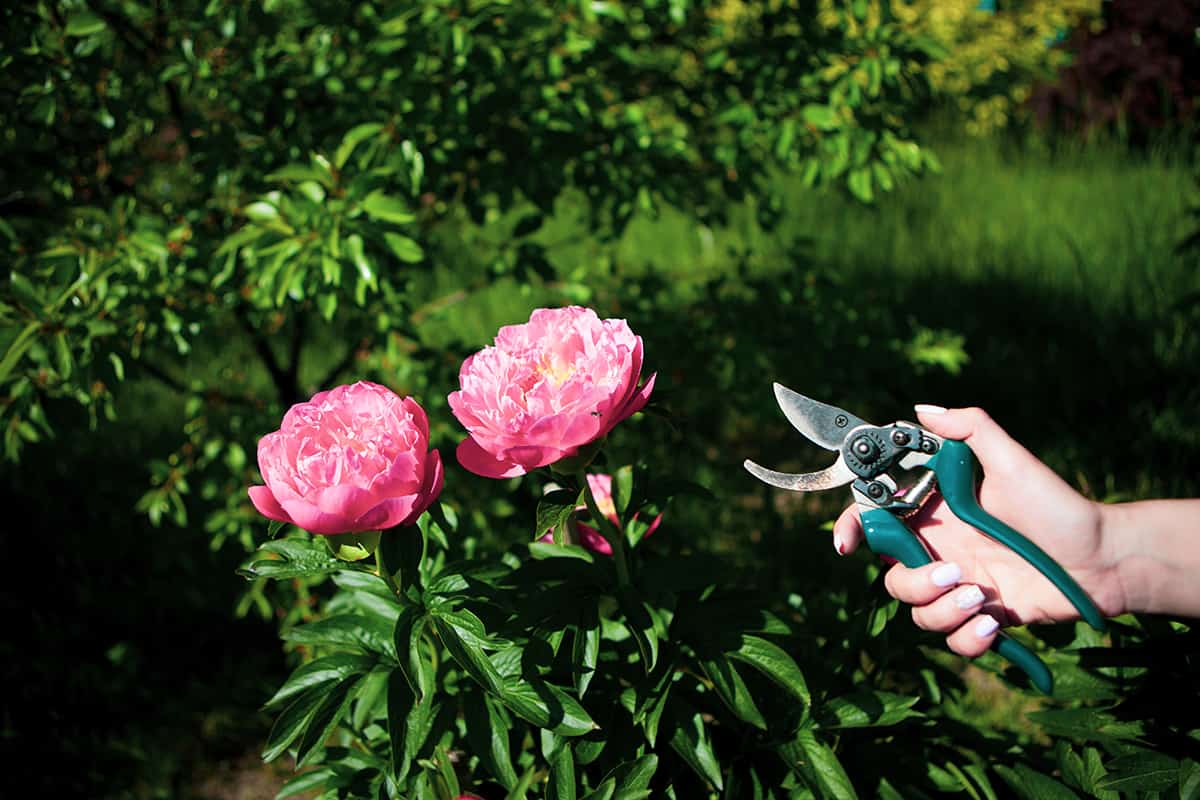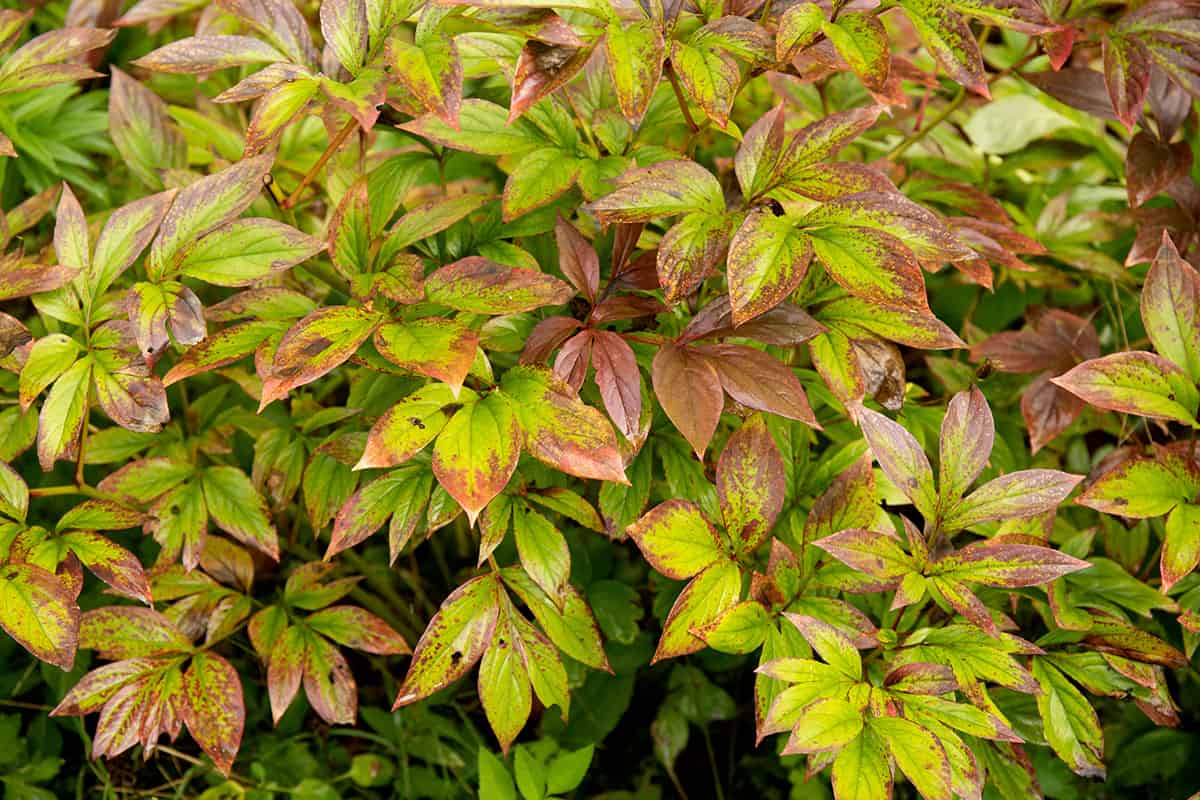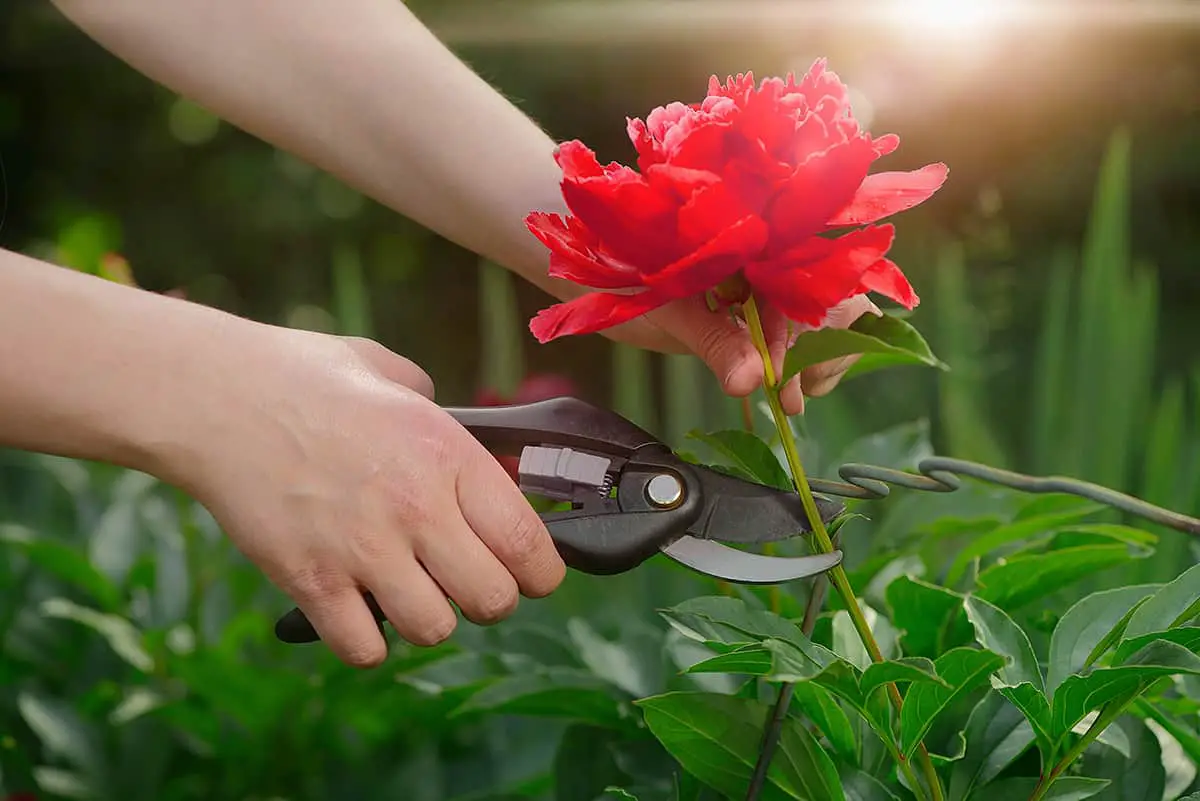Peonies are well known for being low-maintenance plants which reward us with plenty of beautiful flowers in spring and summer. If you want to ensure your peonies stay in tip-top condition, then you’ll need to know how and when they should be cut back.
Table of Contents
Do Peonies Need to be Pruned?

Peonies do not need to be pruned in the sense that you might imagine. Most peonies have compact growth habits, so you won’t find that these plants grow to look messy or oversized, and as such, they won’t need to be pruned in order to keep them neat. However, you can and should prune your peonies at certain times of the year to keep them healthy, and you can also prune them if you wish to use the blooms as cut flowers.
In terms of pruning peonies to restrict growth or encourage growth during their growth period, this is not necessary at all, and can actually harm your plant. Avoid pruning the herbaceous peony plant at all during spring and summer, unless you are cutting flowers to create a bouquet. Tree peonies grow differently, and these can be pruned directly after flowering to alter the shape of the tree or maintain a smaller size.
When is the Best Time to Cut Peony Flowers?
Peonies make excellent cut flowers, which can last for one to two weeks when they have been cut at the correct time. Peonies are popular in bridal bouquets, or as floral arrangements in the home, creating a luscious and romantic look. If you want to ensure your cut peonies last as long as possible then you’ll need to cut them when they are in bud.
This is going to be different for different types of peonies since there are early-season peonies, mid-season peonies, and late-season peonies. If you have had your peony plant for a few years, you may be able to recall what time of year the peonies bloomed, in which case you should start looking out for peonies that are producing buds a week or two before they are expected to bloom.
If you are unsure whether you have an early-season bloomer, mid-season bloomer, or late bloomer, you’ll want to check on your peony plants every few days throughout the growing season to see if you can spot any buds.
Peony buds can form and open quite quickly, so if you identify a peony bud then you should cut it right away. Looking for buds early in the morning is best since they tend to open up later in the day. It can be tempting to wait until the buds have flowered, but your cut peonies will last for much longer if they are snipped while still in the bud.
The bud should be tightly closed and display some color. You can cut as much of the stem as you want, but bear in mind that if you cut away too much you can negatively impact next year’s growth. Ideally, take as much of the stem as you need for your chosen vase, which can include some of the peonies leaves as well, for a fuller look.
When to Cut Back Peony Plants
For herbaceous peonies, when the temperatures begin to drop in fall, the plant will shed its leaves and start to die back. If you aren’t a keen gardener you can leave the peony to die back naturally, but you will witness a much tidier and healthier plant if you can perform the quick task of cutting back the plant.
In fall, some peony leaves will develop warm colors such as yellow, red, or orange, while others remain green until they die back to brown. Wait until the leaves on your plant have started to die, and then cut back the plant. This could be anywhere from the middle of fall to the beginning of winter, depending on the type of peony you have, and your local climate.
Generally, you can count on your herbaceous peonies needing to be cut back in the fall. For tree peonies, these are best pruned immediately after the tree has finished flowering, though it is optional.
How to Cut Back Peonies
Peony plants should be cut back to the soil level. Use a sharp and clean pair of shears or secateurs, and locate the main stems of the peony where the plant emerges from the soil.
Here, make some snips to the stems of the peony plant, leaving just an inch or so above the ground, and discard the dead plant in your garden disposal or compost pile. Wash your garden tools, and store them indoors over the winter. You can help to protect the roots of your peony in lower temperatures by mulching over the soil, which will add some insulation.
Why Should Peonies be Cut Back?

Peony plants can look unpleasant when they die back in the fall, ruining the look of your winter garden. Cutting them back when they are spent will only take a few minutes, and it will really tidy up the look of your garden for the next several months. When the peony plant begins to grow again next spring, it will have a clear empty space to fill, rather than growing around the dead remnants of last year’s peony.
Cutting back your peony in the fall is also beneficial to the health of the plant. Peonies rarely suffer from pest infestations or disease, however, they can be prone to fungal issues. Peony wilt is a common problem that affects these plants, and it is caused by a fungus very similar to gray mold. Though cutting back your peonies in the fall will not guarantee to protect your peonies against peony wilt, it is believed that it will lower the chance of them becoming infected with this disease.
Peony wilt thrives in plants that are subjected to wet conditions for a sustained period of time, which commonly happens in winter. By cutting back the plant to ground level you can protect them from this, which will go some way to preventing peony wilt from developing.
What are the Symptoms of Peony Wilt?

Peony wilt will present itself on the foliage of the plant as brown, dead patches on what should be green healthy leaf tissue. If the fungal disease is able to spread, you will notice entire leaves collapsing in on themselves and turning brown. In buds, peony wilt will prevent the bud from opening, and it will droop downwards, eventually turning to brown rot.
A gray mold with a furry texture can appear anywhere on a plant that is suffering from peony wilt, including the stems. This is a symptom more common in moist and wet conditions.
If your peony is showing signs of this fungal infection, it is important that you remove all of the infected parts of the plant immediately and dispose of them by burning them.
The disease is spread via airborne mold spores, so take care when cutting back the peony to prevent further spread. Hose down the remaining healthy parts of the plant during the warmest part of the day so they will dry off quickly, and watch them carefully for any new signs of developing mold.






